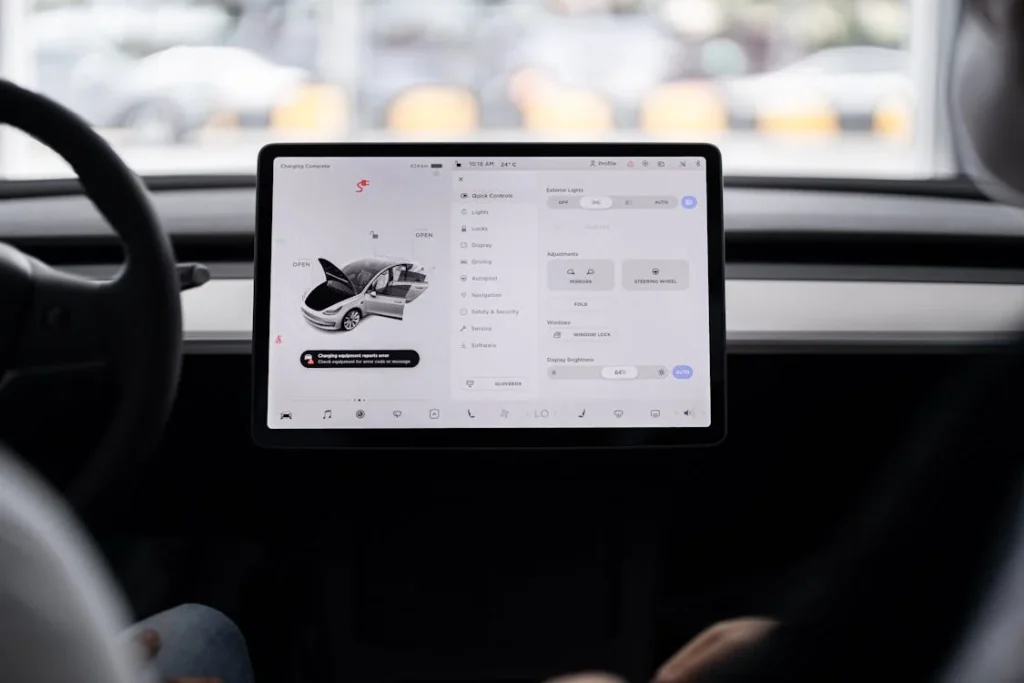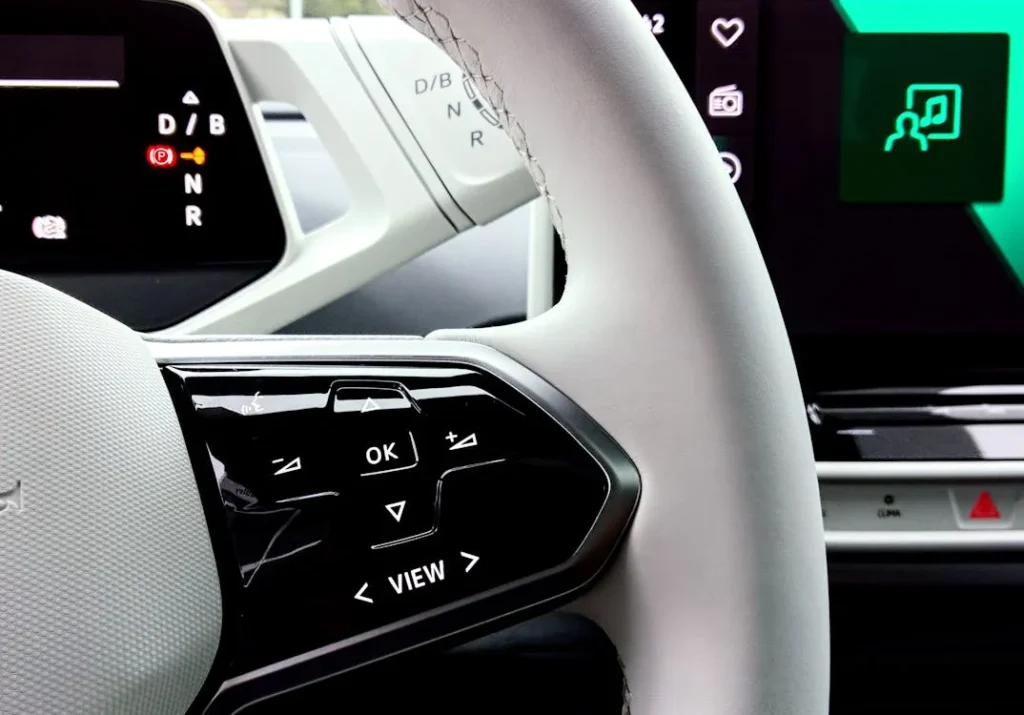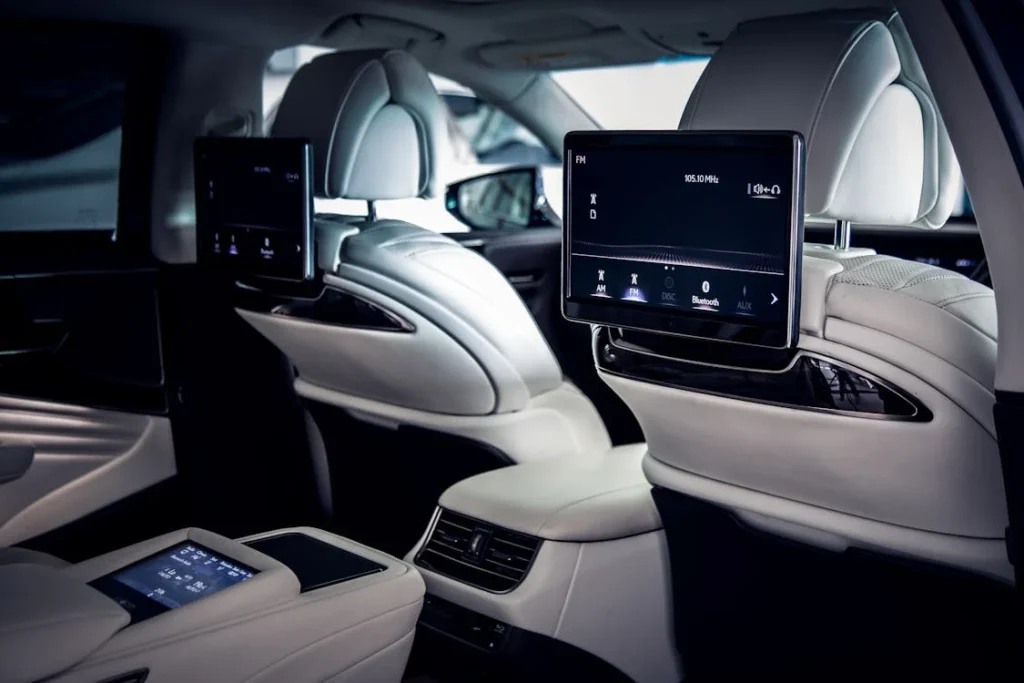Transportation is a fundamental part of daily life, but for people with disabilities, it often presents significant challenges. Many individuals rely on caregivers, specialized transport services, or public transit systems that may not always be reliable or accessible. Autonomous vehicles (AVs) are set to change this by offering new levels of independence, safety, and convenience.
Self-driving cars are not just a technological advancement—they are a game-changer for accessibility. By eliminating the need for a human driver, AVs promise to provide greater mobility, reduced dependence on others, and improved inclusion in workplaces, social settings, and public spaces. In this article, we explore how autonomous vehicles are revolutionizing transportation for disabled individuals and shaping a future where mobility is no longer a barrier.

How Autonomous Vehicles Improve Mobility for Disabled Individuals
For millions of people with disabilities, transportation is one of the biggest obstacles to independence. Public transit is often unreliable, ride-hailing services may not be fully accessible, and personal vehicles require a licensed driver, which is not always an option.
Autonomous vehicles (AVs) have the potential to remove these barriers and provide disabled individuals with a new level of freedom.
Increased Independence and Personal Mobility
One of the greatest benefits of AVs is the ability to travel without relying on another person. Many people with disabilities must depend on family members, caregivers, or specialized transport services for their daily commutes.
This reliance can limit spontaneity and create scheduling difficulties. AVs eliminate this issue by allowing individuals to schedule rides on demand and travel wherever they need to go without assistance.
For example, someone with a visual impairment who previously had to depend on taxis or public transport can now enter a self-driving vehicle and reach their destination independently.
A person with limited mobility who finds it difficult to transfer from a wheelchair to a driver’s seat no longer has to struggle with traditional car controls. With AVs, individuals can move freely, whether it’s commuting to work, attending medical appointments, or visiting friends.
Making Public Transportation More Inclusive
While many cities have made efforts to improve public transportation accessibility, issues still remain.
Buses, trains, and taxis often lack consistent wheelchair access, audible stop announcements, and properly trained drivers.
Autonomous public transport systems, such as self-driving shuttles, could significantly improve accessibility by ensuring that vehicles automatically accommodate diverse mobility needs.
Autonomous taxis and rideshare services can also be tailored for seamless entry and exit, eliminating the frustration of finding a driver who is willing and trained to assist passengers with disabilities.
AVs could feature automatic ramps, voice-activated controls, and customizable seating arrangements, ensuring a stress-free experience for all users.
Enhancing Safety for Disabled Travelers
Many people with disabilities experience higher risks while traveling, whether it’s difficulty getting in and out of vehicles, the challenge of navigating unfamiliar roads, or the unpredictability of relying on others for transportation.
Autonomous vehicles can reduce these risks by providing a safer, more controlled travel experience.
For individuals with conditions like epilepsy, Parkinson’s disease, or muscular dystrophy, driving can be dangerous due to the possibility of sudden medical episodes.
AVs eliminate the need for manual driving, ensuring that individuals can travel without worrying about losing control of the vehicle. Built-in health monitoring systems could also be integrated into AVs, alerting emergency responders if a medical emergency occurs while in transit.
Self-driving technology also minimizes human error, which is a leading cause of road accidents.
Features like real-time traffic analysis, collision avoidance systems, and AI-powered decision-making make autonomous vehicles safer, particularly for those who may struggle with reaction times or physical movement.

Designing Autonomous Vehicles for Accessibility
While autonomous vehicles (AVs) offer incredible potential for improving mobility for disabled individuals, their impact will only be fully realized if they are designed with accessibility in mind.
Simply removing the need for a driver is not enough—self-driving cars must include features that accommodate a wide range of physical, sensory, and cognitive disabilities.
Wheelchair-Accessible Self-Driving Vehicles
For individuals who use wheelchairs, traditional cars require complex transfer processes or costly modifications. Many wheelchair users rely on specially adapted vans, which may not always be available or convenient.
Autonomous vehicles have the potential to eliminate these issues by integrating built-in accessibility features from the start.
An ideal AV for wheelchair users would include:
- Automated ramps or lifts that extend when the vehicle arrives.
- Spacious interiors with flexible seating, allowing users to remain in their wheelchairs.
- Secure locking mechanisms to ensure stability during travel.
- Hands-free entry and exit systems to eliminate the need for manual adjustments.
Several companies are already exploring these features. In some cities, self-driving shuttles equipped with automatic ramps are being tested, making it easier for individuals with mobility impairments to board without assistance.
As the technology advances, fully accessible AVs will become a reality, ensuring that transportation is no longer a barrier for wheelchair users.
Voice-Controlled and Gesture-Based Interfaces
For individuals with limited hand mobility, visual impairments, or conditions affecting fine motor skills, traditional car controls like buttons, touchscreens, and steering wheels are difficult to use.
Autonomous vehicles remove the need for manual driving, but they must also offer intuitive ways for passengers to interact with the system.
Voice-command technology can allow passengers to control navigation, adjust seating, or request stops without needing to press buttons. For example, a blind passenger could simply say, “Take me to the nearest grocery store,” and the AV’s AI would handle the rest.
For individuals who are nonverbal or have speech difficulties, gesture-based controls and customizable touch interfaces can provide alternative ways to interact with the vehicle.
Eye-tracking technology, similar to what is already used in assistive communication devices, could allow users to select destinations or adjust settings just by looking at a screen.
Smart Sensors for Real-Time Assistance
To ensure a seamless and independent travel experience, AVs must be equipped with smart sensors that provide real-time assistance. These could include:
- AI-powered navigation assistants that describe surroundings for visually impaired passengers.
- Haptic feedback systems that alert deaf or hard-of-hearing passengers about important notifications.
- Health monitoring features that detect medical emergencies and automatically contact emergency services if needed.
By integrating these smart systems, AVs can cater to diverse needs and provide personalized support, making travel safer and more convenient for all individuals.

The Role of Autonomous Ride-Sharing and Public Transport
Beyond personal self-driving vehicles, autonomous ride-sharing services and public transportation will play a major role in improving accessibility for disabled individuals.
For many people, owning a car is not an option due to financial, physical, or logistical reasons. However, autonomous taxis, shuttles, and buses can provide an affordable, on-demand mobility solution that meets accessibility needs.
Autonomous Ride-Sharing for Inclusive Mobility
Ride-hailing services like Uber and Lyft have already improved transportation options for many people with disabilities, but these services often come with challenges.
Not all drivers are trained to assist passengers with disabilities, and not all vehicles are wheelchair-accessible. With autonomous ride-sharing fleets, vehicles can be designed specifically for inclusivity.
Self-driving taxis could include:
- Automated booking systems that allow users to request accessibility features when calling for a ride.
- Voice-controlled or app-based interactions for passengers with visual or mobility impairments.
- Built-in vehicle modifications, such as ramps, adjustable seats, and assistive navigation tools.
By ensuring that every autonomous taxi is equipped with accessibility features, individuals with disabilities will no longer face uncertainty when requesting a ride. Instead, they can expect a consistent, inclusive experience every time.
Self-Driving Buses and Shuttles for Public Transit
Public transit is often the most affordable and widely available option for individuals who cannot drive, but many systems are not fully accessible.
Autonomous buses and shuttles have the potential to redefine public transportation, ensuring that all passengers, regardless of ability, can travel comfortably and independently.
Key accessibility features in autonomous public transit could include:
- Step-free boarding with automatic ramps and wide entryways.
- Real-time route updates with audio, visual, and haptic feedback for different disabilities.
- AI-powered passenger assistance, providing guidance on seating, exits, and transfers.
Several cities are already testing self-driving shuttles in urban areas, designed to make short-distance travel more accessible. These vehicles can operate on fixed routes or be requested on-demand, reducing wait times and providing more flexible mobility options.
Reducing Transportation Barriers in Rural Areas
People with disabilities in rural or underserved areas face even greater transportation challenges, as public transit options are often limited or nonexistent. Autonomous vehicles could bridge this gap by providing reliable, low-cost mobility solutions.
For example, self-driving taxis could operate in remote areas where traditional ride-sharing services are scarce, giving individuals with disabilities greater freedom to access workplaces, healthcare facilities, and social activities.
Governments and transit agencies could also deploy autonomous public transit networks in rural communities, reducing isolation and improving overall quality of life.

Challenges and Barriers to Implementing Autonomous Vehicles for Accessibility
While autonomous vehicles (AVs) hold incredible promise for improving mobility for disabled individuals, several challenges must be addressed before they can be fully integrated into everyday life.
From technological limitations to legal and financial hurdles, these barriers must be overcome to ensure AVs truly provide equitable access for all.
Addressing the Need for Inclusive Design in AV Development
One of the biggest challenges in making AVs accessible is ensuring that they are designed from the start with inclusivity in mind. Many self-driving car prototypes have focused on replacing the driver rather than improving the passenger experience for individuals with disabilities.
If accessibility is not prioritized during the early stages of development, AVs risk becoming just another form of transportation that excludes a large portion of the population.
For AVs to be truly accessible, automakers and technology companies must collaborate with disability advocates, engineers, and policymakers to ensure that every aspect of the vehicle’s design is inclusive.
This means considering the needs of individuals with mobility impairments, vision and hearing loss, cognitive disabilities, and other conditions that affect transportation access.
Without these considerations, AVs could replicate the same barriers that exist in traditional vehicles rather than eliminating them.
Overcoming Regulatory and Legal Challenges
The widespread adoption of AVs will require significant legal and regulatory changes, and accessibility must be part of these discussions.
Currently, transportation laws are written for human-driven vehicles, and many disability-related transportation regulations are based on traditional car and transit models.
If laws do not mandate accessibility requirements for AVs, companies may not feel compelled to include features that accommodate disabled passengers.
Governments and regulatory bodies must establish clear accessibility standards for AV manufacturers, ensuring that features such as voice controls, wheelchair access, and assistive navigation tools are required rather than optional.
This means updating policies to reflect the unique capabilities of AVs and ensuring that disabled individuals are included in decision-making processes.
Without legal enforcement, there is a risk that AVs will become widely available without offering meaningful accessibility improvements.
Tackling Affordability and Infrastructure Gaps
Even if AVs are designed to be fully accessible, the cost of acquiring and using them remains a significant concern.
New technology is often expensive in its early stages, and many individuals with disabilities already face financial challenges related to medical expenses, assistive devices, and specialized services.
If AVs are not affordable, they will not be a viable solution for many of the people who need them most.
Governments and private companies must explore subsidy programs, financial assistance, and incentive structures to make AVs accessible to people with disabilities.
Insurance policies must also adapt to cover AV-related expenses, ensuring that individuals who rely on accessible transportation are not burdened with high costs.
Additionally, shared AV models, such as autonomous ride-hailing services, must be priced competitively to serve individuals who cannot afford personal vehicles.
Infrastructure is another key barrier that must be addressed before AVs can be widely used by people with disabilities. Many urban areas lack proper curbside accessibility, making it difficult for AVs to pick up and drop off passengers with mobility impairments.
Rural areas may lack the necessary technological infrastructure, such as 5G networks or smart traffic systems, to support self-driving technology. Without a well-planned infrastructure strategy, AVs may not be able to operate efficiently for individuals who need them most.

The Future of Autonomous Vehicles and Accessibility
The journey toward making autonomous vehicles (AVs) fully accessible is still unfolding, but the future looks promising.
As technology continues to evolve, researchers, policymakers, and disability advocates are working together to ensure that AVs provide real mobility solutions for individuals with disabilities.
By integrating cutting-edge advancements, addressing current barriers, and prioritizing inclusive design, AVs could transform transportation and improve millions of lives.
The Role of Artificial Intelligence in Personalizing Accessibility
Artificial intelligence (AI) will play a major role in making AVs more accessible by allowing vehicles to adapt to individual passenger needs.
Future AVs could come equipped with AI-driven personal assistants that recognize passengers, remember their preferences, and provide tailored experiences.
A self-driving car could automatically adjust seating arrangements for a wheelchair user, set up voice controls for a blind passenger, or provide real-time text-based communication for a deaf rider.
AI-powered navigation systems will also improve the travel experience by offering real-time updates on traffic conditions, accessibility barriers, and route options.
For example, an AV could alert a wheelchair user if a drop-off location lacks a curb cut or suggest an alternative stop that is more accessible.
By incorporating AI into vehicle design, AVs can provide a level of independence and convenience that goes beyond simply transporting passengers from one place to another.
Advancements in Universal Vehicle Design
One of the biggest challenges in making AVs accessible is ensuring that they work for all users, regardless of their disability.
The future of vehicle design must embrace universal accessibility, meaning that every AV should include built-in accessibility features rather than requiring custom modifications.
This shift will allow people with disabilities to hail an AV at any time without worrying about whether it will meet their needs.
Future AVs are likely to feature automated entry systems with retractable ramps, adjustable seating that accommodates different mobility devices, and interior layouts designed for easy maneuverability.
Gesture-based controls, voice commands, and eye-tracking technology will enable passengers with limited mobility or dexterity to interact with the vehicle effortlessly.
The goal is to create a seamless experience where individuals with disabilities can board, ride, and exit a vehicle without assistance.
Smart Cities and the Integration of AVs into Public Infrastructure
As AV technology advances, cities must also evolve to accommodate autonomous transportation. Smart cities will play a critical role in ensuring that AVs function effectively for all residents, including those with disabilities.
Infrastructure improvements such as designated AV pick-up and drop-off zones, integrated communication networks, and real-time accessibility data will be essential for making self-driving cars practical and efficient.
Public transit systems are already experimenting with AV technology to enhance accessibility. Cities are testing self-driving buses and shuttles that can be summoned through mobile apps, reducing wait times and improving last-mile connectivity.
These services have the potential to bridge transportation gaps for individuals who struggle with traditional transit options. By combining AVs with smart city initiatives, urban environments can become more inclusive and mobility-friendly for people with disabilities.
The Global Push for Inclusive Autonomous Transportation
Governments, advocacy groups, and technology companies are increasingly recognizing the importance of making AVs accessible.
Organizations such as the World Health Organization (WHO) and the United Nations (UN) are pushing for global policies that ensure transportation innovations benefit people with disabilities.
Countries are beginning to set regulations that require AV manufacturers to incorporate accessibility features from the start, rather than treating them as optional add-ons.
Collaboration between governments, private companies, and disability advocacy groups will be essential for shaping policies that prioritize inclusive transportation.
By working together, stakeholders can ensure that AVs are not just designed for convenience but also serve as a powerful tool for improving quality of life for individuals with disabilities.

The Economic and Social Impact of Autonomous Vehicles on Accessibility
Beyond improving mobility, autonomous vehicles (AVs) have the potential to create profound economic and social changes for people with disabilities.
By removing transportation barriers, AVs can open doors to employment, education, and social engagement, leading to greater independence and inclusion.
The impact of this technology extends beyond individuals—it benefits businesses, governments, and society as a whole.
Expanding Employment Opportunities for People with Disabilities
One of the biggest challenges individuals with disabilities face is limited access to reliable transportation, which often restricts their ability to work.
Many jobs require commuting, yet public transit systems are not always accessible, and ride-hailing services can be inconsistent or costly.
AVs can change this by providing a dependable and affordable way for people with disabilities to travel to work, reducing unemployment rates and increasing financial independence.
Employers will also benefit from a more accessible transportation system. Many businesses struggle to create truly inclusive workplaces due to the challenges employees with disabilities face in getting to the office.
With AVs offering on-demand, door-to-door transportation, more companies will be able to hire diverse talent, leading to a more inclusive and productive workforce.
In addition, AVs could create new job opportunities within the technology and automotive industries for people with disabilities.
As these vehicles are developed, tested, and maintained, companies will need experts in universal design, accessibility consulting, and AI-driven mobility solutions.
This shift could lead to more employment in fields that directly improve accessibility, ensuring that people with disabilities play a role in shaping the future of transportation.
Improving Access to Education and Healthcare
Education is another area where AVs could create significant positive change. Many students with disabilities struggle to attend schools or universities due to transportation challenges, leading to missed opportunities for learning and social engagement.
Autonomous transportation could make it easier for students to commute safely, ensuring they have the same educational opportunities as their peers.
For individuals who rely on frequent medical visits, AVs could also improve access to healthcare. Many people with disabilities require regular check-ups, therapy sessions, or specialized medical care, but arranging transportation can be difficult.
Self-driving vehicles can ensure timely and stress-free travel to hospitals and clinics, reducing missed appointments and improving overall health outcomes.
In some cases, AVs could be integrated into healthcare services themselves. Autonomous mobile clinics could be deployed in areas where healthcare is difficult to access, bringing medical care directly to individuals who need it most.
These innovations could revolutionize the way healthcare is delivered, especially for people with mobility impairments or chronic conditions.
Reducing Social Isolation and Increasing Community Participation
For many people with disabilities, transportation barriers lead to social isolation. The inability to travel independently can make it difficult to participate in community activities, attend social gatherings, or visit friends and family.
AVs can help break down these barriers by offering reliable, independent mobility, allowing individuals to engage in their communities without relying on others.
With AVs providing a seamless, on-demand transportation experience, people with disabilities can enjoy a more active social life. Attending concerts, sporting events, or public gatherings becomes easier when there is no need to arrange accessible transportation in advance.
This greater mobility can lead to improved mental well-being, stronger social connections, and an overall higher quality of life.
By removing the limitations of traditional transportation, AVs can help create a more inclusive society where individuals with disabilities have the same opportunities for work, education, healthcare, and social engagement as everyone else.
The shift toward accessible autonomous transportation is not just about mobility—it is about empowering individuals to live life on their own terms.
Conclusion
Autonomous vehicles (AVs) have the potential to redefine mobility for people with disabilities, offering independence, safety, and convenience like never before. By eliminating the need for a human driver, AVs can remove transportation barriers that limit access to jobs, education, healthcare, and social opportunities. Whether through self-driving personal cars, autonomous ride-sharing services, or AI-powered public transport, these innovations promise to create a more inclusive world.
However, to truly benefit people with disabilities, AVs must be designed with accessibility in mind from the start. Features such as automated ramps, voice-controlled interfaces, and AI-driven assistance must be standard, not optional. Governments, businesses, and advocacy groups must work together to ensure that AV technology is affordable, inclusive, and widely available.
At Robobionics, we believe that technology should empower everyone. Just as we develop innovative prosthetics like Grippy™ to restore mobility, we support advancements in transportation that enhance independence for people with disabilities. The future of mobility is autonomous—and by prioritizing accessibility, we can ensure it is also equitable and inclusive for all.



